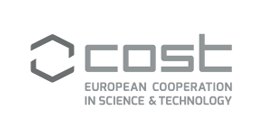Home institution:
Name of the applicant: Ms Dafni Graikioti. Affiliation:PhD student, Patras, Greece
Affiliation: Synthetic Organic Chemistry Laboratory, Department of Chemistry, University of Patras GR-26504 Patras.
Country: GREECE
YRI
Host institution :
Laboratoire de Chimie de Coordination du CNRS - UPR8241 Inserm ERL 1289 Équipe “Nouvelles molécules antipaludiques et approches pharmacologiques” 205 route de Narbonne - BP 44099 - 31077 Toulouse Cedex, France
Name: Michel Baltas
Affiliation: CNRS
Country: FRANCE
-------------------
Summary
A family of naturally occurring endoperoxides called G-factors (G1-G3), is developed by the team. They are structurally six-membered unsaturated cyclic endoperoxides fused to another six-carbon ring deriving from syncarpic acid. They are endogenous in the leaves of Eucalyptus grandis and some other myrtaceous plants. Two synthetic methodologies have already been elaborated and optimized, one giving access to carbon labelled derivatives. Our work concerning the antimalarial activity of the families synthetized indicated that: a) while G3 compound was very poorly active against P. falciparum (36µM), the G3Me presented a very interesting antimalarial activity (280nM), b) R1(or R2) and R positions when alkylated afforded compounds with very potent antiplasmodial activities c) hybrid highly potent molecules were synthetized (IC50 = 13nM and 31nM for chloroquine resistant W2 strain and 3D7 chloroquine susceptible strain); d) our first preliminary results (chemical spectroscopic means) indicated no alkylation, contrary to artemisinin, when reacting G3Me with Mn-porphyrin system, indicating that these new antimalarial candidates could be particularly promising.
The aim of the integral project can be resumed in five main points: 1a: elaborate G3 compounds bearing same type of terminal alkynes (or azides) functions either on the peroxy-hemiketal position or on the lateral chain; 1b: construct focalized libraries for SAR studies, each compound bearing the alkyne (or azide) fragment. 2 and 3: in vitro activity and cytotoxicity evaluation of all compounds against P. falciparum wild and resistant strains. 4:Construct hybrids with other antimalarial pharmacophores, particularly with plasmodione, menadione and HDAC derivatives through click chemistry approaches. 5: Select the 4 most potent derivatives and synthetize them in their labelled forms. 6: Undertake in vitro and in vivo studies for elucidating the mechanism of action of two of the most promising compounds where a coumarin-based fluorescent probe will be also installed.
Finally, chemoproteomics and large-scale quantitative proteomics strategies studies will be performed using adequate Plasmodium parasites cell lines as cellular contexts.
Goals of the STSM
During the 44 days of STSM inernship, our efforts will be directed towards synthesis of chemical probes which structurally resemble to simple active derivatives (see Fig 1), while containing a click handle (alkyne or azide functional group). The alkyne and azide probes will be incorporated into the R position. This could still provide active compounds but in addition these functional groups
can be used for click modifications: i) by incorporating another pharmacophore or ii) by applying to chemoproteomics studies. Three different click probes (alkyl chain length) will be introduced, thus, in the case of chemoproteomics, increasing the chances of excluding as much artefacts as possible, and therefore to end up with a reasonable number of potential protein targets for validation. The length of the linker could also be crucial in activities when introducing via click chemistry a second pharmacophore. All synthetized compoiunds will be tested for their antiplasmodial activities.
Expected outcome and contribution to the Action MoU objectives and deliverables
Main expected results and their contribution to the progress towards the Action WGs objectives (either research coordination and/or capacity building objectives) and deliverables.
Deliverables - contribution to Working Group 1: Compound libraries coordination and integration of compound design
At least 2g of syncarpic acid synthetized according to methodology 1
At least 200mg of labelled syncarpic acid synthetized according to methodology 2
At least 200mg of endoperoxide G3 synthetized according to methodology 1.
At least 100mg of labelled endoperoxide G3 synthetized according to methodology 2.
At least 2x50mg of non-labelled alkylated G3 endoperoxide with alkyne terminal function and bearing one or two methylenic groups
At least 50mg of one non-labelled alkylated G3 endoperoxide with azide terminal function.
A joint research proposal including also other members of the COST Action will be elaborated.
A team seminar on the results obtained is to be presented by the applicant at the end of her internship.
COST (European Cooperation in Science and Technology) is a funding agency for research and innovation networks. The COST ACTIONS help connect research initiatives across Europe and enable scientists to grow their ideas by sharing them with their peers. This boosts their research, career and innovation.
One Health drugs against parasitic vector borne diseases in Europe and beyond
OneHealthdrugs
24/10/2022
23/10/2026
27/05/2022
Download file
Maria Paola Costi
Anabela Cordeiro da Silva
Maria Cristina Notarsanto
Maria Esposito and Laura Leonardi



